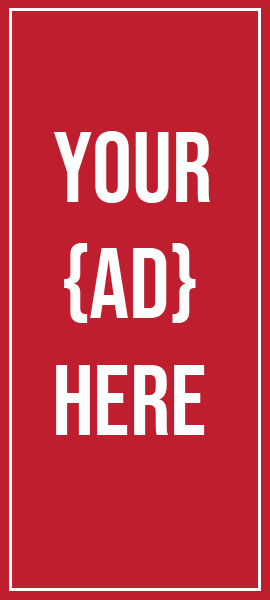
Introduction to Business Proposals
I don’t pretend we have all the answers. But the questions are certainly worth thinking about.
– Arthur C. Clarke
Introduction
Proposals are a very unique type of business document.Whether your company sells to other businesses or directly to consumers, you are in the business of convincing clients to spend their money with you.
A business proposal is usually necessary as part of this procedure for a B2B organisation. When dealing in the business-to-business sector, the next stage is to close a contract with new customers, who are virtually invariably other businesses.
This transaction requires a bit more effort than business-to-consumer transactions (B2C), which employ marketing strategies and then wait for their customers to respond by purchasing their goods and services. Your business proposal will be a crucial component at this point.
Even though the stages you follow and the structure of your business proposal may alter depending on the firm for which you work, there is a tried-and-true strategy you can use to streamline the process, particularly if you are creating a proposal for the first time or for the first few times.
In this lesson, we will explore the proposal writing process, as well as the most common types of proposals. Note that we only provide an overview of the four major types; there are many variations on these types, as well as more specialized categories.

Warm Up Exercise
The purpose of this warm-up exercise is to get you thinking.
Think about any proposal that you have (ever) written. Whether it was just an idea, an excerpt, or a complete proposal, take a moment to recollect the strategies that you have used to write the proposal. Then write a few points about where you had difficulties and areas that you need to improve.
What is a Proposal?
A proposal is primarily a sales pitch for a product or service that your company offers. It outlines a problem or opportunity that the client has and presents a product or service as a solution.
Proposals can be directed externally (to another organization) or internally (for example, to senior management, in order to gain support for a project or idea). In this course, we will focus on external proposals, but the principles can also be applied to internal proposals.
Brief check
Proposals can also be solicited or unsolicited. Solicited proposals are written in response to a Request for Proposal (RFP) or Invitation for Proposal (IFP). Unsolicited proposals are those that the organization sends on its own in an attempt to gain new business.
The Proposal Writing Process
The proposal writing process has seven major steps.

Diagram here
As we have indicated above, the writing and editing process is often repeated several times. We will work through the entire process during this course.
Types of Proposals
There are four main categories of proposals. Note that these categories can and do overlap – proposals are unique to each situation and each organization.
A Technical Proposalis a specific kind of proposal that defines the technical requirements for a project. It also details the approach and complete plan (including time, cost, and resources) for the project.This proposal is excellent at showing companies how you can easily solve technological problems in their organization, without the need for them to find and hire skilled staff.Although these types of proposals are often read and approved by a technical team, it is important to include an executive summary, introduction, and conclusion that are written for the layman.
As you might imagine, Sales Proposalsare usually written to convince a new client to purchase a product or service. This is done by building a case for why the client needs that particular product or service, and why you are the best person for the job. These are the types of proposals that we will focus on in this workshop.Because this type of proposal is essentially a sales pitch, clarity and conciseness are absolutely crucial. Make sure that this proposal focuses on what the solution can do for the customer, rather than the nuts and bolts of the proposed project.
A Cost Proposalis an outline of estimated costs. It is usually prepared by a contractor to prepare for project negotiations.
The following items are essential in a cost proposal:
- Solid estimates with backup data
- Detailed breakdown of all foreseeable costs, including material, resources, labor, equipment, travel, administrative expenses, etc.
- Summary of high-level costs for executives
- Professionally prepared disclaimer validating that these are best estimates only
A Professional Service proposal is a type of sales proposal that focuses on a professional service offering, such as public relations, marketing, or health care.Because of the focus on service, the following elements are usually included:
- List of the people who will be providing the service and their credentials
- Organization’s record of service
- Testimonials and references
- Resources available in the organization
You may also see some elements of the cost proposal, such as a breakdown of labor costs.

About Requests for Proposals
Earlier, we mentioned that the proposal process can be initiated by a Request for Proposals (or RFP). This is a document issued by a company requesting proposals for a particular project. The RFP can be as simple or as detailed as a company likes – it all depends on what they require.
Information commonly requested via an RFP can include:
- Organizational background
- Organization’s experience with the requested product or service
- Solution details
- Project timeline and budget
Customer reference
Brief check
If you are responding to an RFP always double and triple check that you have included all the information requested. If the RFP details a particular person to submit the proposal to, and a date to submit it by, follow their instructions.
Any RFP requests (such as those pertaining to style, language, format, and/or template) should supersede any company or best-practice policies. If you are not sure which set of rules should take precedence, consult with your manager.
Planning Your Proposal
Determine your target audience. Before you begin writing, evaluate your audience and what they may already know or not know about your issue. This will allow you to concentrate on your thoughts and express them in the most effective manner possible. Ensure that critical communications reach your target audience through the appropriate channel.

Always assume that your readers are busy and do not have time to read or scan over your thoughts quickly. So, keep it brief and to the point!
Describe the issue.Just because you understand the problem doesn’t guarantee your audience does.
Furthermore, your audience may be dubious of what you’re saying. You can back up your assertions with evidence and explanations throughout the proposal to back up your points. By clearly stating your problem, you will be much more persuading that you are the ideal person to handle it.
Specify your solution.After stating the issue, you must provide remedies that will persuade hesitant readers to support it. You can back up your solution with case studies to show the audience why it works.
If the examples you present are case studies that demonstrate successful solution implementation, explain why it succeeded. And if it fails, explain to the audience why it failed and how you plan to improve and make it a success.
Once you’ve gathered all of the crucial elements, you can go on to describing your concepts and planning how you want your words to be delivered.
Practical Application
Kevin and Carol, his co-worker, were seated next to each other in the meeting. In the most recent few months, they had seen a slump in product sales, and as a result, they were debating various strategies to boost sales. Carol suggested that the company may provide discounts or other benefits to its current clientele. That’s a fantastic technique to make the customer feel like they’re important to you. Kevin remarked, “That’s a concept to put into action. While we are doing that, I had the thought that we could also send a sales proposal to Blake International in order to educate them about our new product line.
Carol questioned whether or not they had requested that the two of us put together a proposal. “No,” Kevin answered. “However, we also have the option of sending an unsolicited proposal, which will place an emphasis on what it is that we can accomplish for the customer.”
The group led by Kevin and Carol got to work on the idea, and the corporation began to give them their time, attention, and interest in what they were doing.





